2014 Porsche 911 Turbo Road Test
- Written by Dan Heyman
- Published in CAR REVIEWS
- font size decrease font size increase font size
- Be the first to comment!
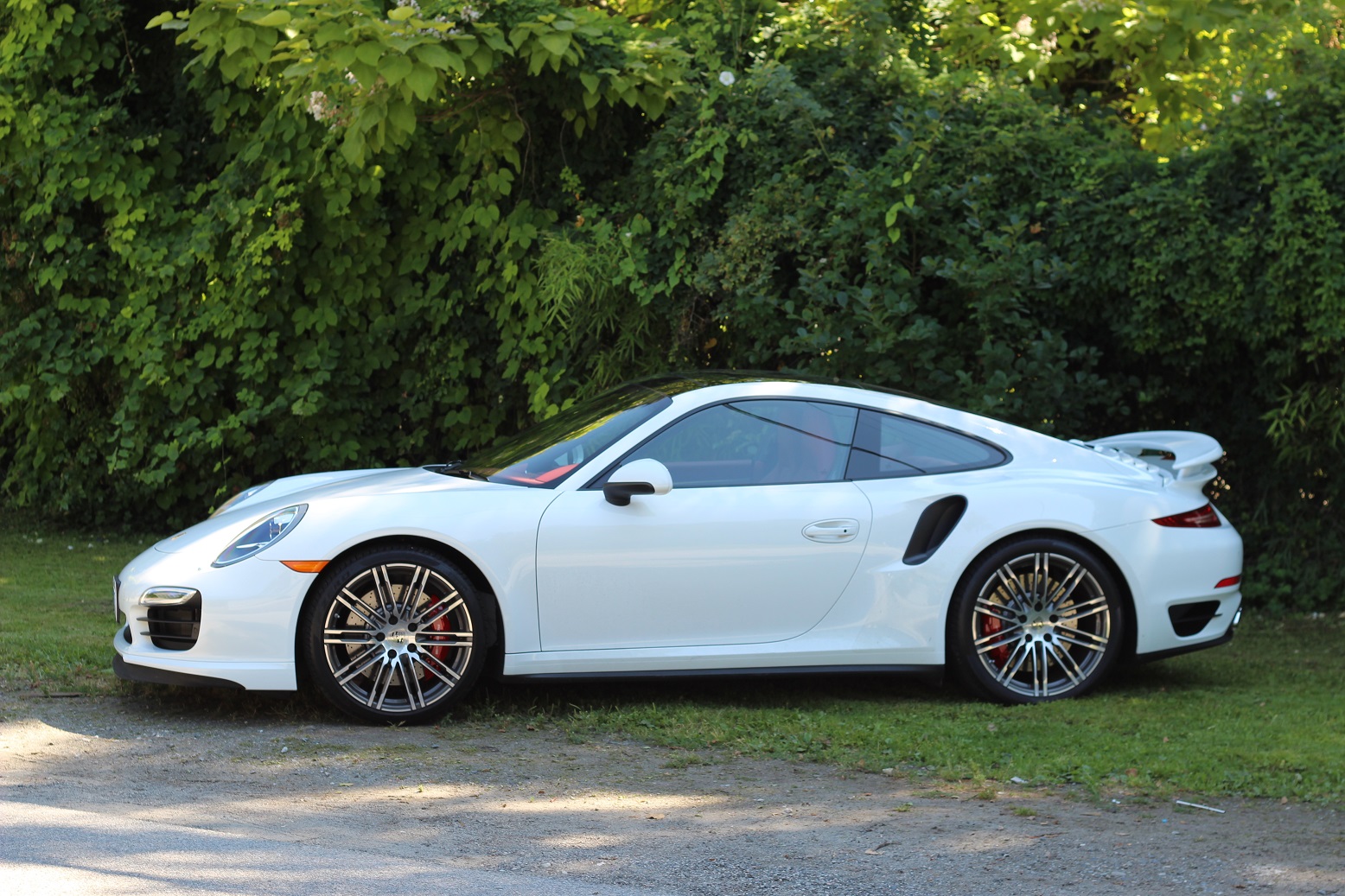 There was an (understandably) loud outcry when Porsche switched from hydraulic to electronic power steering for this latest (991) generation of the 911 sports car.
There was an (understandably) loud outcry when Porsche switched from hydraulic to electronic power steering for this latest (991) generation of the 911 sports car.
Understandable because while other sports car manufacturers were switching to all-automatic transmission choices, self-leveling suspension dampers and that shameful EPAS set-up, Porsche stood steadfastly by its pure roots.
Heck, it even stuck to air cooling all the way until 1998, when pretty much every car, truck and ride-a-mower was using liquid cooling.
Then again, what do you expect from a car with a backwards powertrain in the first place?
So you can see the fear of kowtowing to the 911’s luxury audience become manifest in those that want them for the purity of their sporting background.
After sampling the latest 911 Turbo, however, I’d kindly ask them to take a breath. Maybe not a sigh of relief, but a breath, anyway.
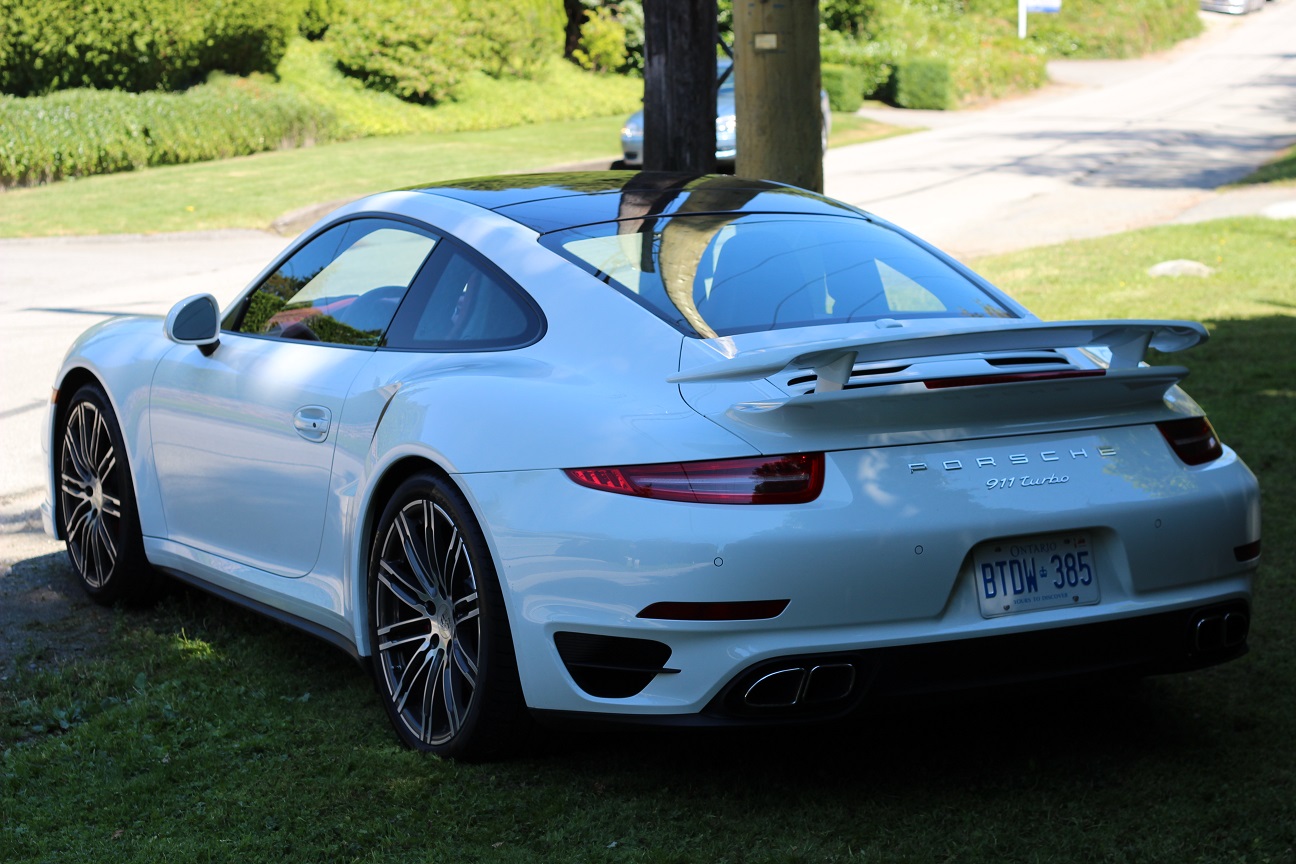
It's such a spectacular thing and it starts as soon as you slide into one of the deep buckets up front. Porsche just knows how to do seating positions right. In the past, I recall testing a handful of supercars back-to-back and coming away feeling that Porsche was a little too upright, but now I realize that’s not a bad thing.
The steering wheel, gear lever (not used that much, considering my tester’s PDK dual clutch auto) and pedals all sit just where they’re supposed to, and since the engine’s out back, you don’t have acres of hood in front of you. Instead, you get a pair of pontoons either side of your view, making the placement of the 911 a joy. There’s even headroom enough for a six-feet-plusser like me.
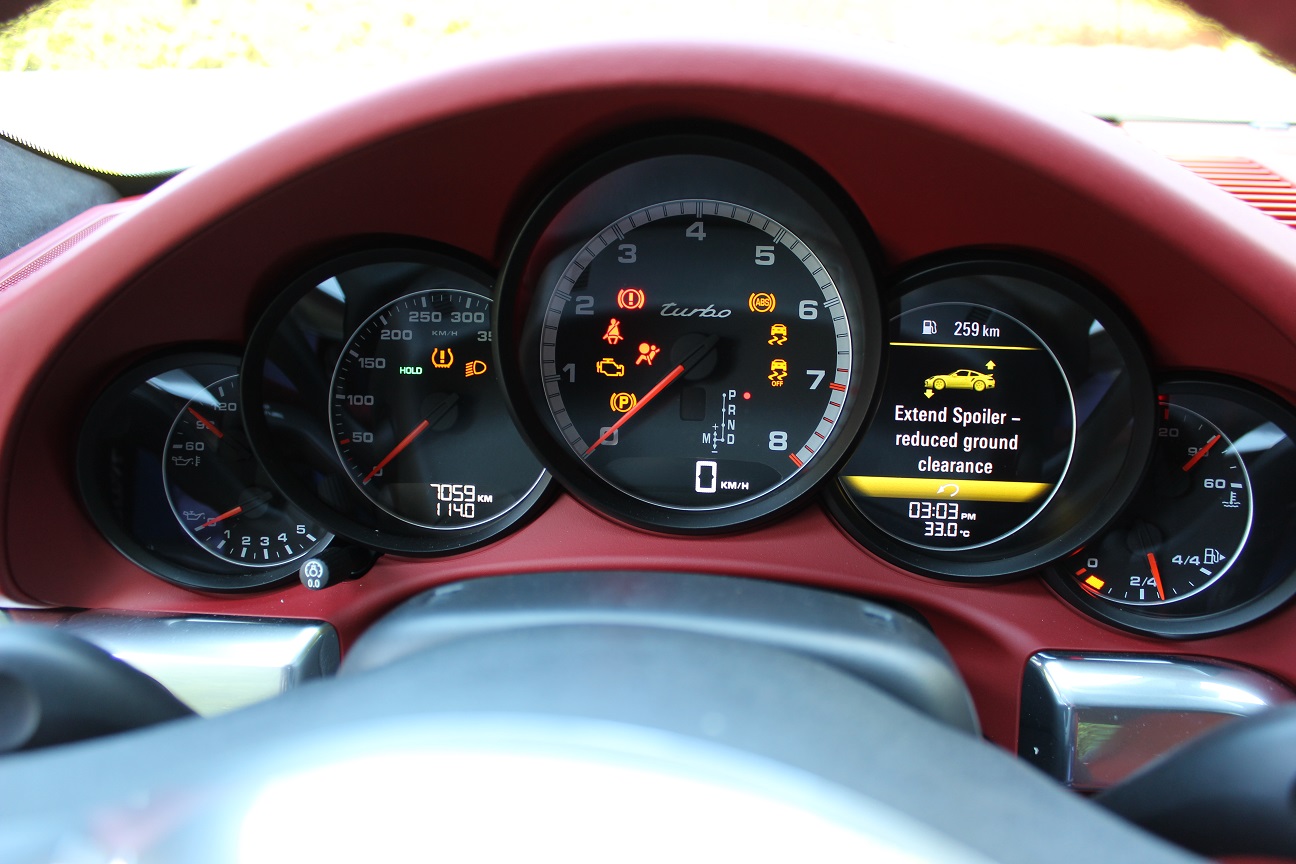 I won’t say everything about the non-driving aspect of the 911 Turbo experience is perfect; Park Assist, which costs $400, doesn’t give you a back-up cam but provides you with a “virtual” look at what’s going on around your car, and it’s not enough. The Carrera Red leather—while impressive to almost everyone who sat inside the car—costs $1,730 and you’re another $2,280 in the hole if you want a power sunroof. Such is the price of luxury, however, once you turn the key (mounted traditionally left of the steering column, of course), forget about it.
I won’t say everything about the non-driving aspect of the 911 Turbo experience is perfect; Park Assist, which costs $400, doesn’t give you a back-up cam but provides you with a “virtual” look at what’s going on around your car, and it’s not enough. The Carrera Red leather—while impressive to almost everyone who sat inside the car—costs $1,730 and you’re another $2,280 in the hole if you want a power sunroof. Such is the price of luxury, however, once you turn the key (mounted traditionally left of the steering column, of course), forget about it.
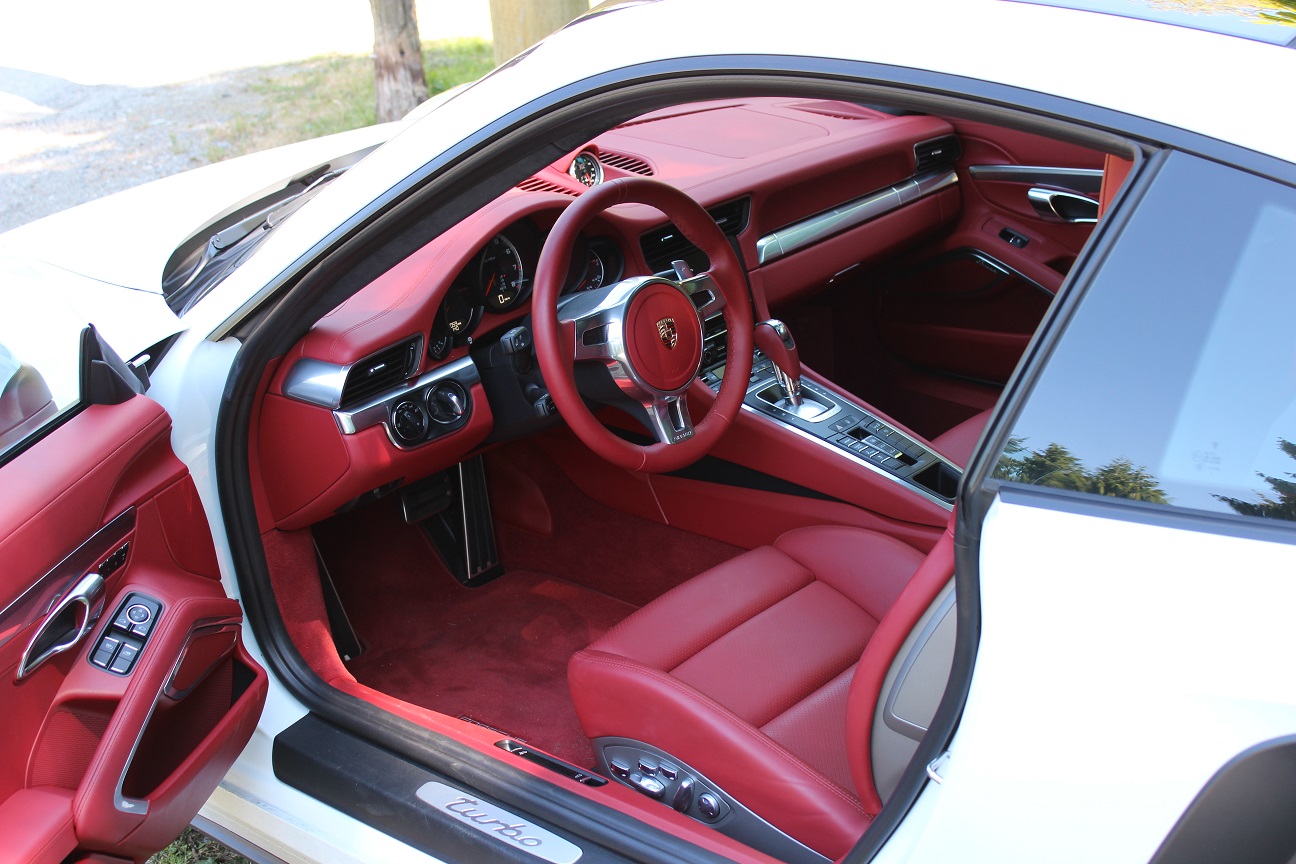 You can give me patent leather seats from the Dolce & Gabbana catalogue for all I care, as long as the acceleration remains as it does.
You can give me patent leather seats from the Dolce & Gabbana catalogue for all I care, as long as the acceleration remains as it does.
There is very little out there that can out-match an all-wheel-drive, 520-hp twin-turbocharged 911 for outright launch speed; we’re talking a claimed 3.2 second 0-60 mph time, here, and forward progress is so stratospheric that you’d swear it was a lot less than that.
Think of that feeling you get just as you’re in the midst of a drop on your favourite roller coaster, only it’s multiplied because you’re in control of it and are actually fighting against the rules of physics to keep your hands on the wheel. Everything on your periphery gets blurry, and you get the impression that the world ahead is coming at you in one enormous ball. I’ve driven more powerful cars available for less money (hello, Dodge Challenger Hellcat) but they can’t match this delivery. It’s wicked, it’s heart-pounding and it’s addictive, as you push forward, adjustable front lip spoiler and hydraulic rear wing in all-out attack mode.
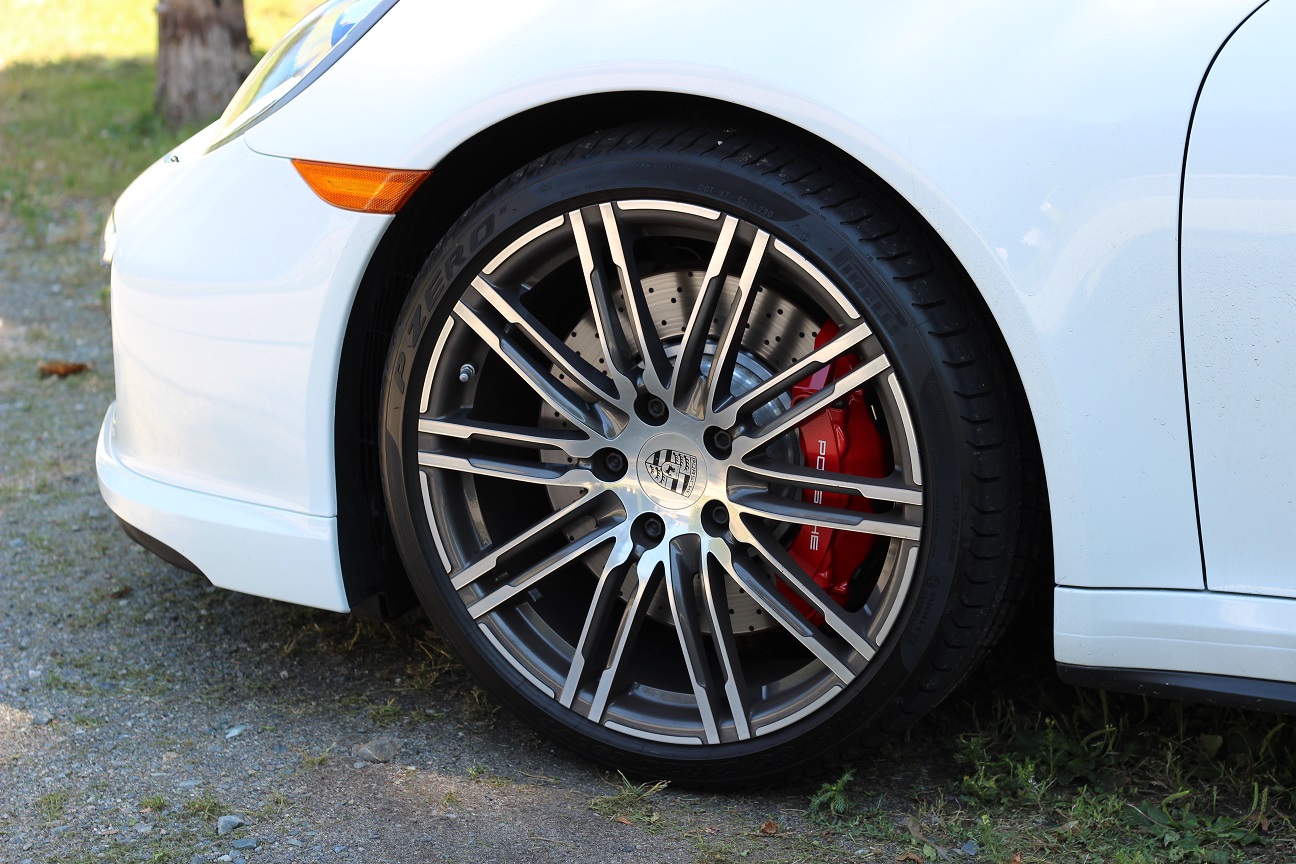
After a slight squiggle from the hips, you’re off, grabbing cog after cog via the column-mounted shift paddle and experiencing that power surge again and again. Thanks to Porsche’s variable-vane turbo tech, whereby the turbo impeller’s vanes change angles depending on how forcefully exhaust gases are surging through, power delivery doesn’t suffer like it does in so many other turbo cars.
Of course, you’ll eventually run out of straight tarmac, and this is when a chassis that equals the available power comes into focus.
Yes, you have a faster-reacting all-wheel-drive system with electronic differentials, but the handling package is taken a step further with the addition of rear-wheel steering and active engine mounts, which, along with active roll bars, come as part of the $4,470 Sport Chrono package.
The former works as advertised, helping the big rear end swivel that much more quickly, but the latter is what truly impresses.
Because the engine is attached to the chassis via electronically-controlled dampers, the area of the chassis where the most weight is centered doesn’t quite have the same overbearing effect. This is especially important when said engine is slung out aft of the rear axle.
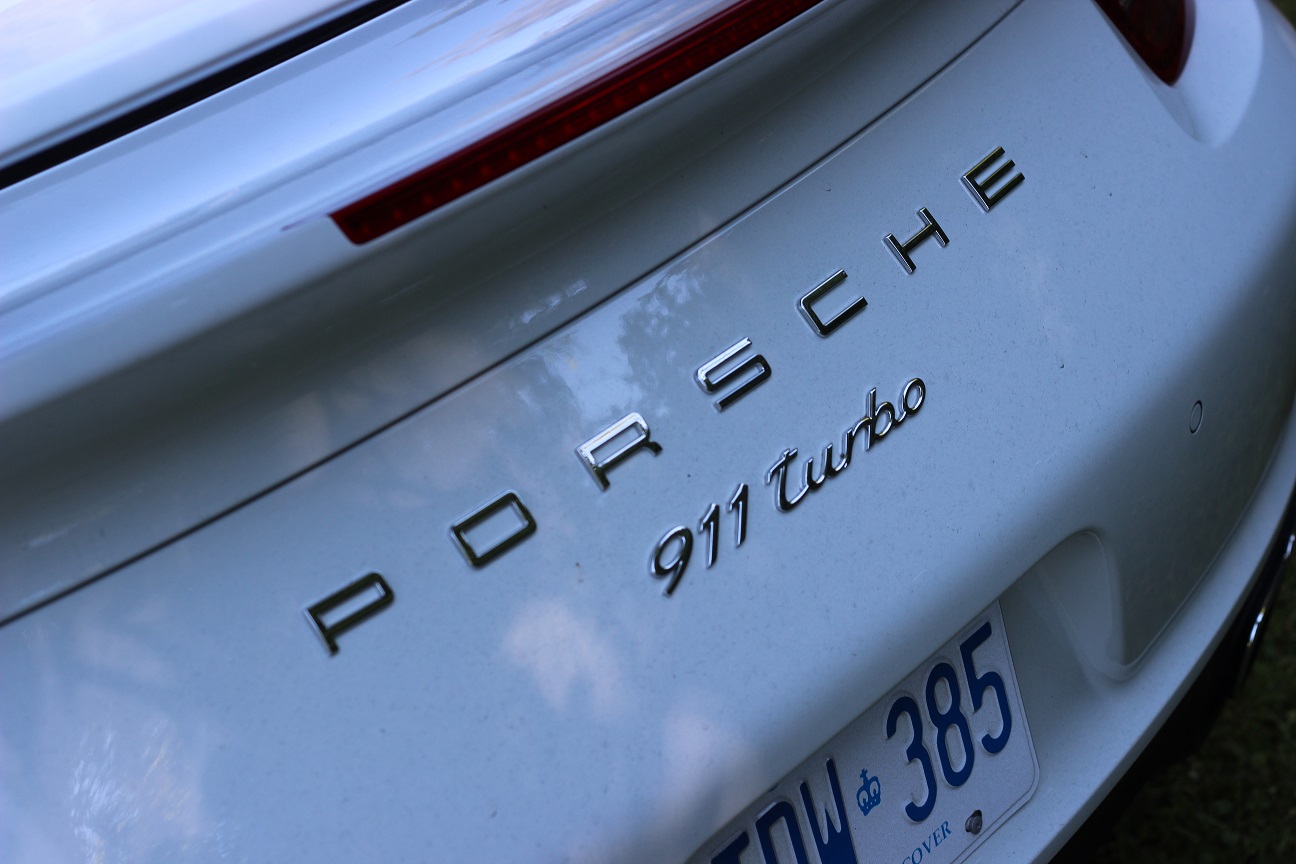
The result is such that even though the engine has those moving mounts, it actually makes the 911 handle more “as one” than it would otherwise. Inertia rates are lowered (you can even feel this ‘round town in one of the more relaxed driving modes—there are three altogether), turn in is quickened and the road ahead has no chance. Add the Dynamic Chassis Control that provides auto-adjusting dampers, and you have the whole package.
Which brings us to the steering.
As cavalier as I was earlier, You do miss that nuggety hydro-assist steering feel. The rim is great to hold, the response is direct but through long sweepers, it gets a little harder to determine what the car’s up to. It’s just a slight disconnect, but as is often the case with aggressive chassis set-ups like this, slight disconnects become all that more apparent.
Hard to hold it against Porsche, though. An electronic set-up helps preserve fuel and allows drivers to select different steering settings, all things that owners will appreciate if they use their 911 Turbo a lot. It’s so good, that I bet they will; it may fall just short of daily driver status due to its storage constraints and cost of ownership, but it’s as close as you’re going to get of a mix of performance and the everyday, this side of a Nissan GT-R.
